By Dr. K. Javeed Nayeem, MD
Last week I wrote about the philanthropy of Pandit Rajavaidya P.H. Chandrabhan Singh, one of the Royal Physicians of Mysore, in gifting away 32 acres of his agricultural land for the establishment of a school for rural children, way back in the year 1970. I also mentioned there that the Jawahar Navodaya School which now stands on that gifted plot of land, once used to function from the Aloka Palace near the village of Yelwal, very close to Mysuru, on the Hunsur Road.
In response to many queries from my readers about this place, I have decided to throw some light on this almost completely forgotten royal edifice. The existence of this place is almost unknown to present day Mysureans because it is tucked away from public view, completely surrounded by a wooded expanse of nearly 500 acres.
More appropriately known as the Yelawala Residency, it was built by Arthur Cole, the then resident of the East India Company, during the time of H.H. Maharaja Mummadi Krishnaraja Wodeyar, in the year 1806 a year after our Government House was built. It was meant to serve as a hunting lodge for the Maharaja and his guests and was designed on the pattern of a structure called ‘Kutra House’ in Ireland.
Cole’s successor Casamore is said to have stayed in it till the year 1840. The wooded area around it was where the royal guests used to indulge in the sport of pig sticking, as wild boars were in abundance there then, as they are even now.
To me, this is a place full of many happy memories from the days of my childhood, because it was the locale of many picnic lunches for our family. Since it lay in the path of our frequent journeys between Mysore, where I used to do my schooling and Chikmagalur, where I used to spend my holidays, it was always our preferred spot for some rest and refreshment.
In fact, as a child, I have explored every nook and corner of the sprawling bungalow which had some very interesting cellars and hidden rooms. It consists of a large central structure with two symmetrical attachments on either side, connected by two unusually narrow, curved corridors.
Gouri Satya, my historian friend, in his book, Mysore Memories mentions that these corridors were actually open, pillared pathways that were later walled up. In fact, his book is the only resource that gives a detailed account of this place, which otherwise finds very few references in the history of Mysore. The huge, single storied building has many large halls with glass panelled doors and windows and a roof supported by massive teak beams and rafters.
It has a quaint, spiral, wooden staircase which ends in a watchtower-like covered turret and leads you to the roof which is laid with rectangular terracotta tiles. I doubt if this staircase still stands there today because it used to creak pitifully in the days I used to stomp on it, more than fifty years ago!
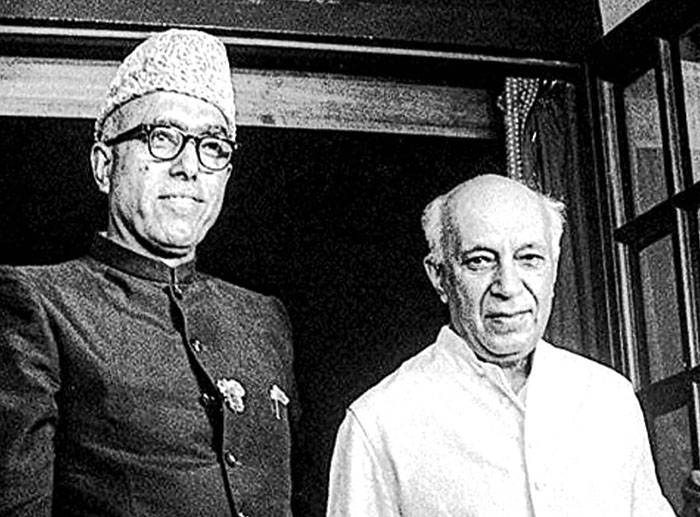
On the whole, the entire place with its huge empty rooms, dusty floor, peeling walls, broken window panes, cobwebs and bat droppings, used to fit my imagination of a haunted place perfectly, which is why I was very fond of it.
Another little-known fact about the Aloka Palace is that this was where the Kashmiri leader Sheik Abdulla spent some time during his eleven-year detention by the Indian Government, between the years 1953 – 1964.
It is said that he penned a part of his autobiography ‘The Blazing Chinar’ during his stay here but surprisingly there is no mention about it in the book itself.
He had a tumultuous, love-hate relationship with our Prime Minister Jawaharlal Nehru which ended with his release just a few days before the latter’s death.
Today the whole area of the Aloka Palace is under the control of the Forest Department which has a forest training institute there. A couple of years ago there was an announcement that the place was thrown open to the public as a nature park but this does not seem to be the case now.
But if you are not scared of lonely, wooded places and if you decide to drive through the narrow road that traverses it, your headlights will most likely pick up a boar rushing across, along with an occasional jackal and many sprinting hares. If you go there by day, you will be delighted by the many peacocks and partridges you’ll invariably see, pecking away on the roadside. And, if you are a nature lover and lazy traveller like me and therefore decide to just stop for a long while and soak in the natural surroundings, you’ll be so mesmerised by the birdsong that you’ll never feel like coming away from the magical place!
e-mail: [email protected]



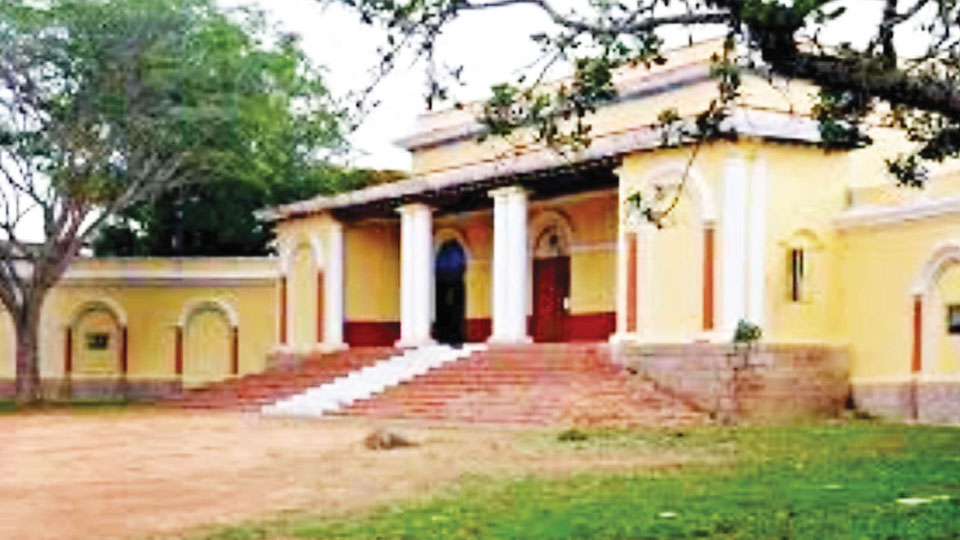
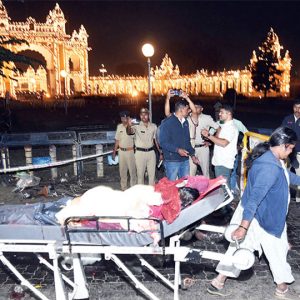

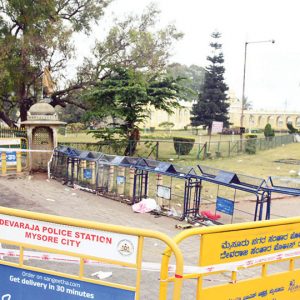
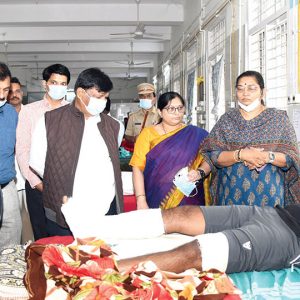
@ More appropriately known as the Yelawala Residency, it was built by Arthur Cole, the then resident of the East India Company, during the time of H.H. Maharaja Mummadi Krishnaraja Wodeyar, in the year 1806 a year after our Government House was built. It was meant to serve as a hunting lodge for the Maharaja and his guests and was designed on the pattern of a structure called ‘Kutra House’ in Ireland…..
Hon. A.H. Cole was not the Resident of Mysore in 1806. There is no known mansion in Ireland known as Kutra House either !
Hon. Arthur Henry Cole was the younger son of the 1st earl of Enniskillen of Florence Court, Fermanagh, He was Secretary to the Resident since 1906 and then Assistant Resident, officiated in the post until about 1812, when he was confirmed in it, and he continued in the post till 1827. In 1809, when the mutiny of European officers spread to Mysore ( they were stationed at Seringapatam ) , he was appointed to impede the progress of the British forces marching from Chitaldrug to Seringapatam.
On rising ground to the west of Yelwal is the Yelwal Residency, erected by the Hon. Arthur Cole, on designs taken from the Enniskillen seat in Ireland.It had extensive stables and out-buildings which have since been partly dismantled . A mile or two to the south was the old Hinkal race-course, ( Part of JCE College now) with several bungalows ( now ???) erected for the occupation of the chief officers and guests at the races. He also built a Bungalow atop Chamundi Hills where Lord William Bentinck (1774-1839), who was Governor General of India from 1828-1835 stayed during his visit to Mysore on March 16, 1834 . This bungalow gave way to Rajendra Vilas Palace.
Hey Nayeem
When you post an article, I know there is some where there about you. Sure here it is:”In fact, as a child, I have explored every nook and corner of the sprawling bungalow which had some very interesting cellars and hidden rooms. It consists of a large central structure with two symmetrical attachments on either side, connected by two unusually narrow, curved corridors”
So, you were every where in your childhood, in all palaces and bungalows in Mysore and India, and every one is your friend ,all the mighties and famous.
Why not you write your experience of inviting Raj Kapoor to your home and giving him samosas and kebbas? Why not also spin a yarn about talking with Lata Mangeshkar for 2 hours?
Always an attention seeker!! Look after your health first, losing plenty of weight
@xxxx sounds like Australian lager! You must be the original @Questo, hiding there!
Hey Nayeem
When you post an article, I know there is some where there about you. Sure here it is:”In fact, as a child, I have explored every nook and corner of the sprawling bungalow which had some very interesting cellars and hidden rooms. It consists of a large central structure with two symmetrical attachments on either side, connected by two unusually narrow, curved corridors”
So, you were every where in your childhood, in all palaces and bungalows in Mysore and India, and every one is your friend ,all the mighties and famous.
Why not you write your experience of inviting Raj Kapoor to your home and giving him samosas and kebbas? Why not also spin a yarn about talking with Lata Mangeshkar for 2 hours?
Always an attention seeker!! Look after your health first, losing plenty of weight
@xxxx sounds like Australian lager! You must be the original @Questo, hiding there!
Hello Javeed Nayeem
@xxxx has picked some holes in your narrative facts which I tend to agree , as you have always been dreadful in your research, as the purpose of any of your articles, as the above poster says is to advertise yourself!
Hence,: “Another little-known fact about the Aloka Palace is that this was where the Kashmiri leader Sheik Abdulla spent some time during his eleven-year detention by the Indian Government, between the years 1953 – 1964”.
Working backwards from during your MD course days under that rude, corrupt and ignoramus mentor Dr NA Jadhav, of KR Hospital, then known as “Santhepet merchants’ doctor”, as he fleeced the rich Santhepet merchants then ( totally ignored the poor patients sending his junior doctors to them, not bothered) , taking only MD students who were rich and pay him nicely, and, considering the initial period of the 1953-1964 detention of Sheik Abdulla, when your childhood fits in, how were you able to explore the nooks and corners of this bungalow, when Sheik Abdulla was there? Or were you visiting “uncle” Sheik Abdulla, he was” uncle ” to most Indian Muslims whose loyalty to India was nonexistence then and even now?
Hello,
This also was the campus of the Chamarajendra Academy of Visual Arts for a few years. A beautiful campus and holds a lot of great memories.
Thanks for this article.